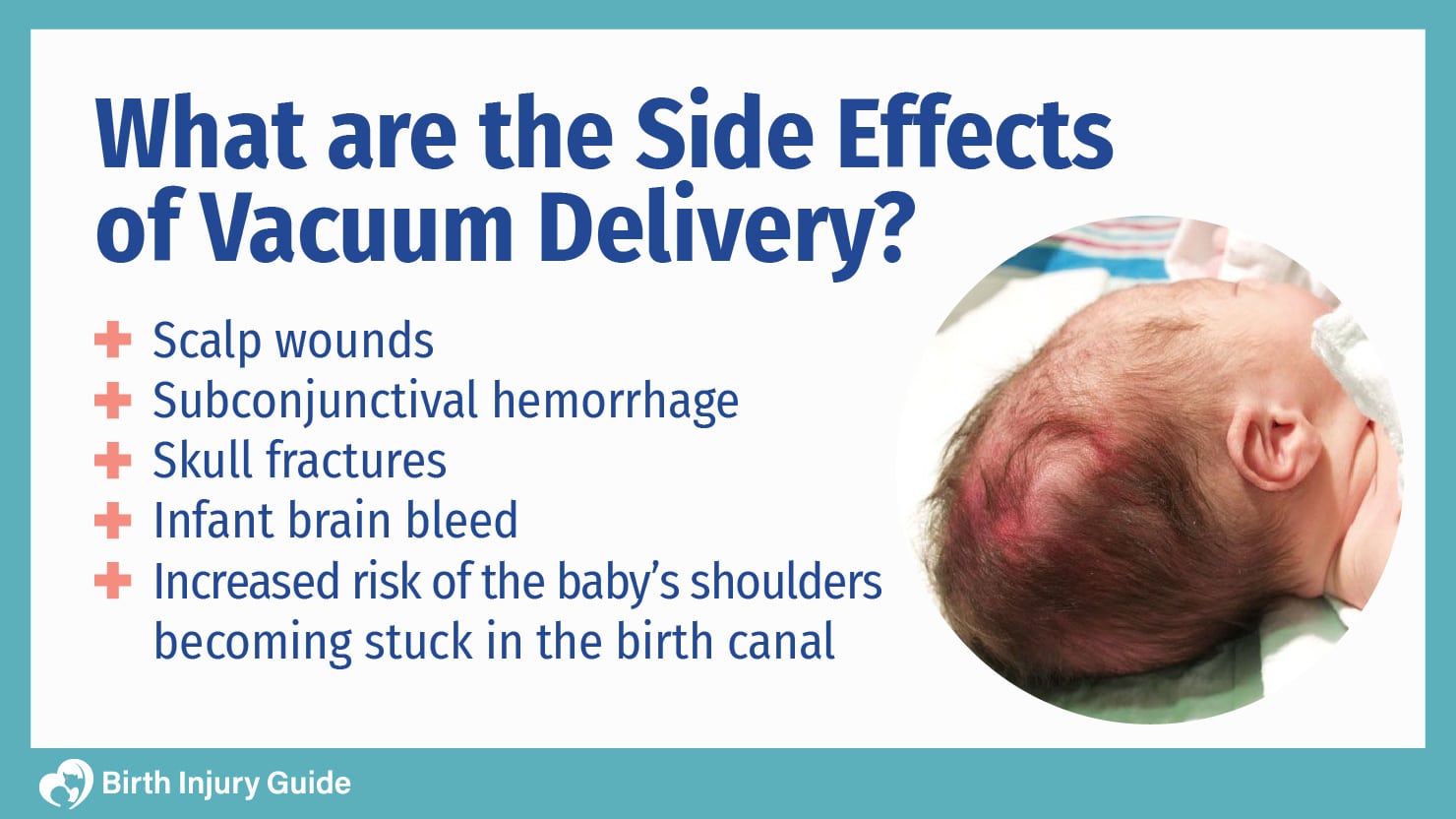
What are the Side Effects of Assisted Delivery?
Sometimes, despite the best planning and preparation, labor and delivery becomes complicated or problems arise. For the safety of the mother and baby, doctors often use tools to aid in vaginal delivery, such as vacuum extractors or forceps. Unfortunately for parents, there is rarely time to consider the side effects of assisted delivery in the heat of the moment. Instead, you put your trust in your doctor to make the best decision for you and your child.
But what happens when using assistive tools was not in your best interests and as a result your child was injured? Read on to learn more about the potential dangers and side effects of assisted delivery, and what you can do to protect your child.
What Does Assisted Delivery Mean?
Sometimes during a vaginal delivery, problems arise that can stall the process, tire you out or cause the baby to become stuck in the birth canal. If the doctor assesses the situation and determines that you or the baby need a bit of help, he or she can assist the delivery process using tools, such as forceps or a vacuum extractor. This allows the doctor to help guide the baby through the birth canal to, hopefully, a successful vaginal birth.
What are the Side Effects of Vacuum Delivery?
Vacuum extractors have been used for decades in assisted vaginal delivery. Today, vacuum extraction is used in less than three percent of all births. However, it is important that expectant parents be aware of these tools and how they could factor into their birth experience.
When a vacuum is used to assist delivery, the doctor places a cup on the top and back of the baby’s head. During a contraction, the doctor uses the suction to help pull the baby through the birth canal and out of the vaginal opening. It is incredibly important that vacuum extractors are used properly. When they are not, the result can be devastating. The baby’s head may become deformed (often temporary), but may also suffer injuries. A vacuum extractor can create a “cone-head” like appearance to the baby’s head, which can be alarming for parents.

Some of the side effects of vacuum delivery include:
- Scalp wounds
- Subconjunctival hemorrhage (baby has red spot in eye)
- Skull fractures
- Infant brain bleed (intracranial hemorrhage)
- Increased risk of the baby’s shoulders becoming stuck in the birth canal (shoulder dystocia, also called shoulder dysplasia)
The risks associated with these possible side effects are even greater when considering that head or brain injuries can lead to conditions like cerebral palsy, seizure disorders or intellectual disabilities. Severe head or brain trauma can also cause fatal injuries. It is critically important to protect the baby’s head.
What are the Side Effects of Forceps Delivery?
Forceps are commonplace in many operating rooms and doctor’s offices. The forceps doctors use during delivery, however, are specialized. These forceps look more like two large round spoons that when applied, cup the baby’s head. Forceps are used during difficult, delayed or emergent situations when the baby needs to be delivered as soon as possible. Some examples include maternal exhaustion, non-reassuring fetal wellness, illness or infection, or maternal hemorrhage.
It is important for doctors to weigh the possible side effects of using forceps with other risks, and determine that using birth-assisting tools is the best choice over ordering a c-section. They should also inform parents of their options to proceed with assisted vaginal delivery, or elect to order a c-section.

The possible side effects of using forceps include:
- Facial injuries, including damage to facial nerves
- Weakness or paralysis in the facial muscles
- Eye trauma
- Skull fracture
- Bleeding in the skull
- Seizures
These side effects can lead to serious health conditions like seizure disorders, stroke or cerebral palsy. Further, severe damage to the muscles and nerves in the face can lead to permanent disfigurement and impaired function. There are different types of tools that may be used for certain situations. For example, depending on the position of the baby’s head, doctors may use different types of forceps.
How Common are Birth Injuries During Assisted Delivery?
Birth injuries associated with assisted birth are considered low, but that does not mean the risk should be discounted. Over the past several years, a number of articles have been published documenting the dangers of assistive tools. One Canadian study found that, when doctors assist in delivery when the baby was not in distress, there was a 5-10 percent increase in the risk of severe birth trauma.
Research in the United States and the United Kingdom continues. Researchers urge parents to be aware of the possible risks. Researchers also urge doctors to ensure that healthcare teams are properly trained and have experience in using these tools before attempting an assisted delivery. Doctors should be aware of factors that can increase the risk of possible side effects.
Risk factors for side effects include:
- A very large baby (macrosomia)
- Positioning of the baby
- The baby’s head is too high in the birth canal
- The doctor is not experienced in delivering using assistive tools
The U.S. Food and Drug Administration (FDA) and the American College of Obstetricians and Gynecologists (ACOG) have strict guidelines and recommendations about use of these tools. Doctors should be trained in how to properly use these tools, and when it is best to choose an alternative method of delivery.
My Child was Injured, What Now?
It is not uncommon for assisted delivery to cause minor injuries, such as bruising on the baby’s head. These injuries will go away on their own within a few days or weeks. More serious injuries or side effects of using forceps or vacuums may not go away, and in fact, may be permanent.
While some injuries may be unavoidable, birth injuries related to delivery are often the result of doctor negligence. Doctors who lack training and experience in using these tools may place them improperly, pull too hard, twist too far or delay the process by attempting a vaginal birth when a c-section is necessary. Improper use of forceps and vacuums is one of the most common reasons why birth injury lawsuits are filed.
If your child was injured due to improper use of forceps or a vacuum, it is important to contact a birth injury lawyer as soon as possible to discuss your case. You may be entitled to financial compensation for your injuries, medical expenses and other costs. At Birth Injury Guide, our goal is to help you understand your legal rights and ensure that your family gets the justice you deserve.
Start Your FREE Case Review Today
If you or your child is injured as a result of medical negligence, call us to learn more.
Sources:
- https://www.mayoclinic.org/tests-procedures/vacuum-extraction/about/pac-20395232
- https://www.mayoclinic.org/tests-procedures/forceps-delivery/about/pac-20394207
- https://www.acog.org/Patients/FAQs/Assisted-Vaginal-Delivery
- https://www.todaysparent.com/pregnancy/giving-birth/a-vacuum-or-forceps-delivery-could-be-riskier-than-a-c-section-for-mom-and-baby/
- http://www.contemporaryobgyn.net/obstetrics-gynecology-womens-health/acog-guidelines-glance-operative-vaginal-delivery/page/0/1



